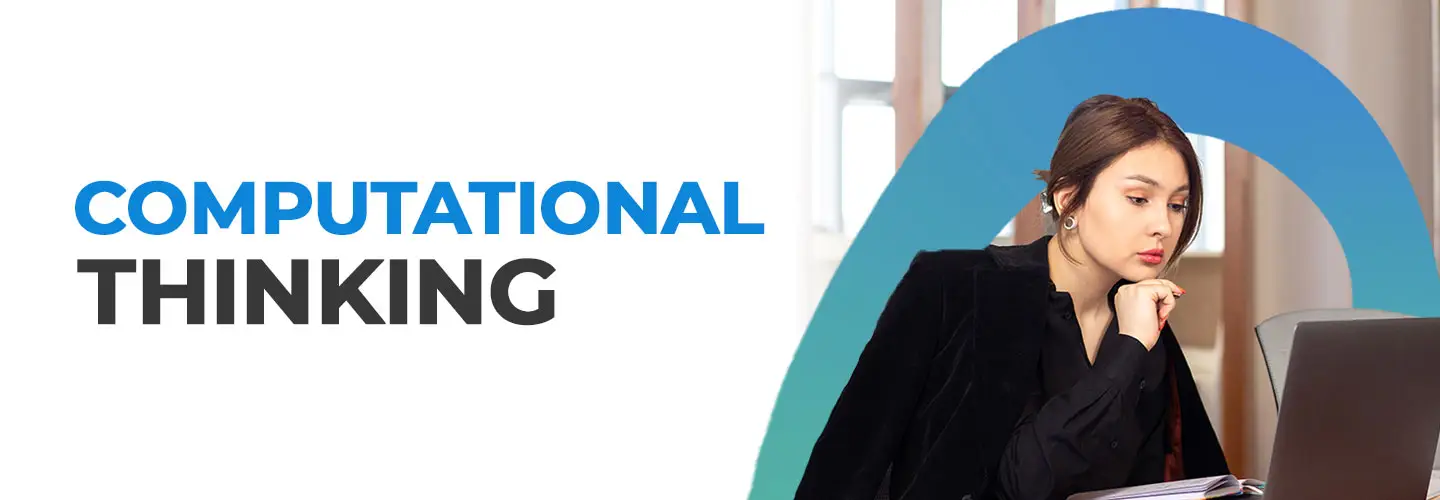4 Essential Computational Thinking Basics for Solving Complex Problems

Computational thinking is one way of thinking used to solve problems. However, before solving a problem, you must be able to deeply understand the basics of the problem and the best way to solve it.
The process of understanding is part of computational thinking. Maybe you are thinking, is this way of thinking needed in everyday life? The answer is it is needed.
Because, computational thinking combines two other ways of thinking, namely analytical thinking and critical thinking.
The following is a complete explanation of computational thinking, from the basics to examples of its application.
What is Computational Thinking?
Computational thinking is the process of identifying structured and detailed solutions to a complex problem.
Quoted from Learning, the process starts from breaking down the problem into small parts according to the group or situation, paying attention to the patterns of each part, eliminating unnecessary problems or parts, and creating structural solutions that can be used repeatedly.
This thinking process uses the basic methodology of computer science, where in solving a problem, the concepts of algorithms, data structures, and automation are usually used. Computational thinking prioritizes precise, logical, efficient, and measurable steps.
The process of solving problems in small parts aims to understand the problems and situations that exist, then look for problems that can be handled quickly or actually do not need to be solved.
Then, the process of observing patterns focuses on looking at situations and comparing them to other situations or past events. From there you can find the same patterns and solutions to a problem. Later, the solutions used can be used again to solve similar problems in the future.
Benefits of Computational Thinking
- Solving complex or complicated problems: when faced with complicated situations or problems, it is better to use computational thinking to ensure that the solution is effective and structured.
- Producing efficient and automatable solutions: effective solutions must be reusable and automated, meaning you can solve the same problems faster in the future.
- Analyzing data to find insights: this benefit of computational thinking helps you create solutions based on data with high accuracy.
- Offering innovation: when faced with complicated problems, you must be able to innovate through creative ideas and solutions. Especially if you are facing modern problems related to technology and digitalization.
- Becoming an important soft skill: when you have computational thinking skills, then you have a plus point in the eyes of the company. Every industry, be it manufacturing, finance, marketing, or health, needs individuals who are able to solve complex and innovative problems.
4 Important Basics of Computational Thinking
Whether used in computer systems or everyday life practices, here are four important basics of computational thinking, according to the BBC:
Decomposition
The recycling process is the act of breaking down items into small parts or pieces, so that they are easy to handle or reuse.
The same thing is done in computational thinking, you have to break problems into small parts so that they are easier to analyze. That way, you can handle problems well one by one.
Pattern Recognition
In each problem that has been broken down into small parts, try to find the same pattern. This will help you relate one problem to another to find the best solution.
In addition, you can also look for patterns from similar problems that have occurred in the past. From there you can also use the same approach to solve the problem. The goal is not to limit yourself to seeing trends and patterns of a problem.
Abstraction
Focus on relevant and important problems only. If there is a situation or problem that is not related, leave it immediately. Don't waste time on unimportant problems, so that the main problem is forgotten.
Algorithmic Thinking
The last is to create a structured solution with precise and effective steps. Also make sure you have analyzed and recognized the risks that may occur, to know how to deal with them.
Even if necessary, create steps that can be used in the future when similar problems occur again.
Example of Computational Thinking
Putting together a puzzle
The simplest example of using computational thinking is when putting together a puzzle. This process is certainly done in stages.
Some people with computational thinking skills will take the following steps:
- Divide the puzzle pieces into several groups.
- Prioritize completing each corner of the puzzle first.
- Regroup the puzzle based on its illustration, such as an object or background.
- Then, focus on the image or illustration that is most visible.
- Unite each corner and focus on the "content" or center of the puzzle.
Writing
- A writer uses computational thinking in:
- Grouping article ideas or content.
- Composing an article outline.
- Grouping sources of information, based on the parts or types of information needed.
- Prioritizing data and facts.
- Composing a narrative structure that is in accordance with the topic.
- Ensuring that each sentence has coherence or is related to each other.
It can be concluded that computational thinking is the ability to solve problems effectively, innovatively, and in a structured manner. The solutions offered must also be reusable and even automated. This ability is needed in every industry, so it is important to have this one skill.
If you want to develop computational thinking, then register and study in the Prasmul-Eli short program entitled Problem Solving & Decision Making.
You can get knowledge and best practices from professionals and industry experts. Visit this page now for the program list!


